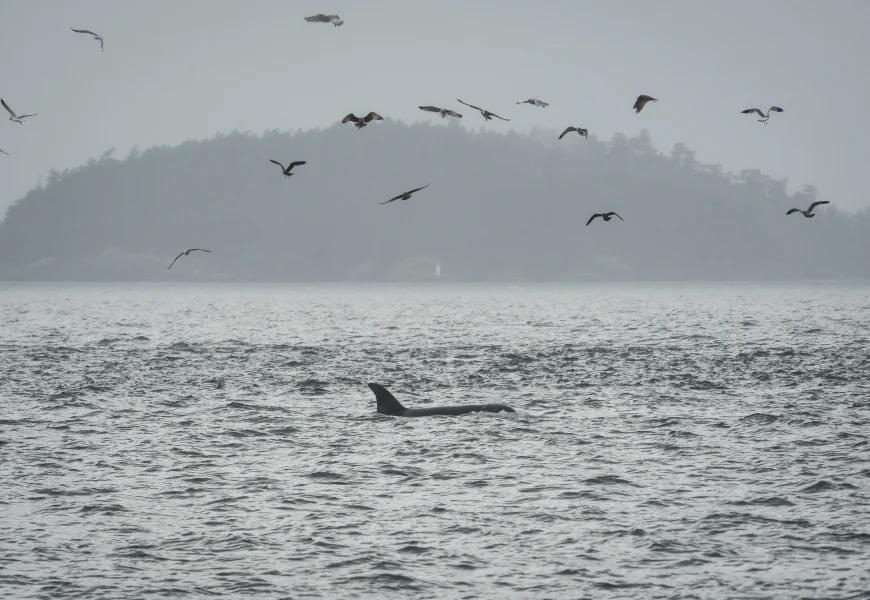SAN JUAN ISLAND, Wash. (AP) – As dawn broke over San Juan Island, a team of scientists stood on the deck of a barge and unspooled over a mile of fiber-optic cable into the frigid waters of the Salish Sea. Working by headlamp, they fed the line from the rocky shore down to the seafloor – home to the region’s orcas.
Scientists hope underwater fiber-optic cables can help save endangered orcas
SAN JUAN ISLAND, Wash. (AP) – As dawn broke over San Juan Island, a team of scientists stood on the deck of a barge and unspooled over a mile of fiber-optic cable into the frigid waters of the Salish Sea. Working by headlamp, they fed the line from the rocky shore down to the seafloor – home to the region’s orcas.
The bet is that the same hair-thin strands that carry internet signals can be transformed into a continuous underwater microphone to capture the clicks, calls and whistles of passing whales – information that could reveal how they respond to ship traffic, food scarcity and climate change. If the experiment works, the thousands of miles of fiber-optic cables that already crisscross the ocean floor could be turned into a vast listening network that could inform conservation efforts worldwide.
The technology, called Distributed Acoustic Sensing, or DAS, was developed to monitor pipelines and detect infrastructure problems. Now University of Washington scientists are adapting it to listen to the ocean. Unlike traditional hydrophones that listen from a single spot, DAS turns the entire cable into a sensor, allowing it to pinpoint the exact location of an animal and determine the direction it’s heading.
“We can imagine that we have thousands of hydrophones along the cable recording data continuously,” said Shima Abadi, professor at the University of Washington Bothell School of STEM and the University of Washington School of Oceanography. “We can know where the animals are and learn about their migration patterns much better than hydrophones.”


